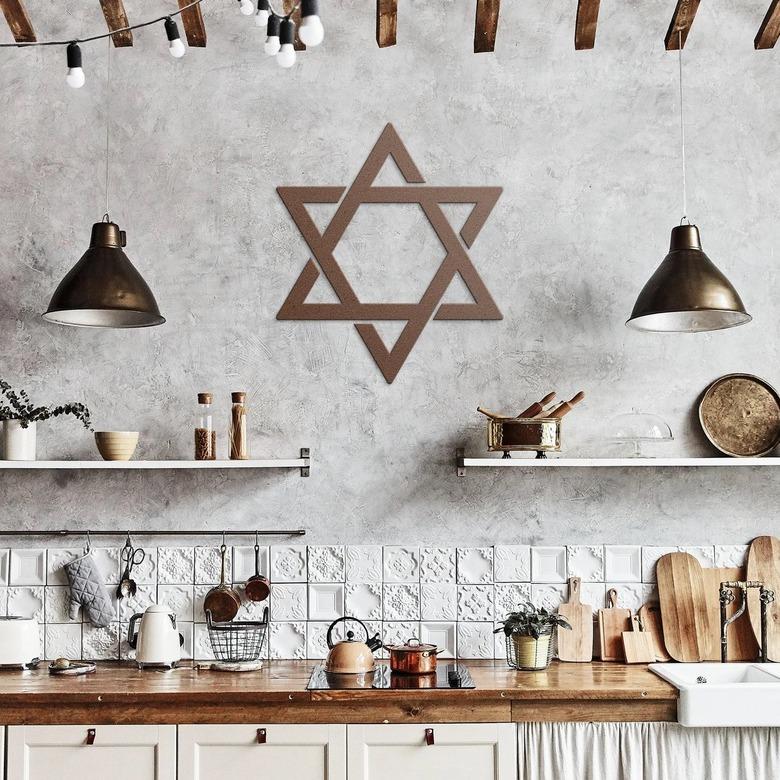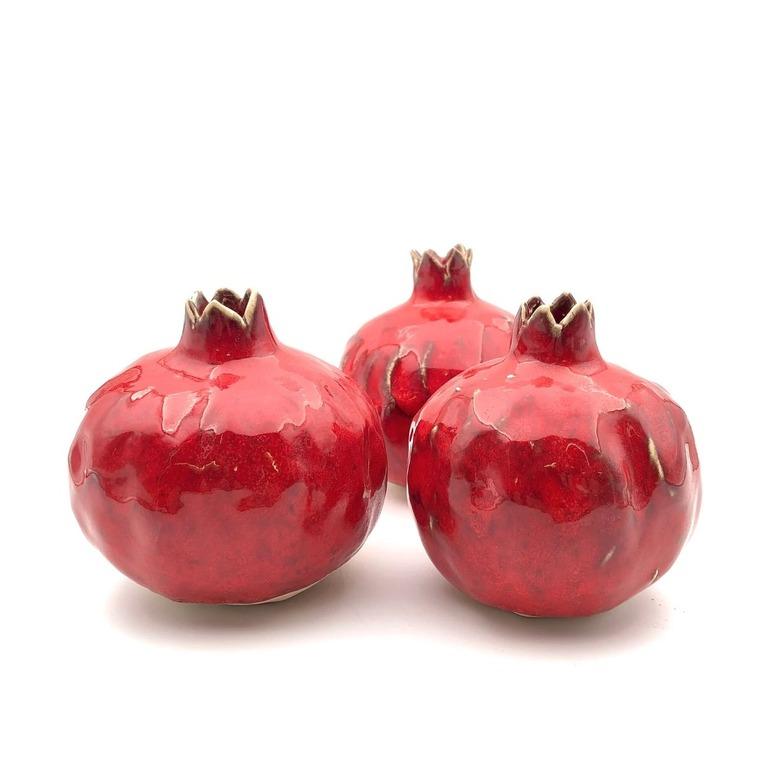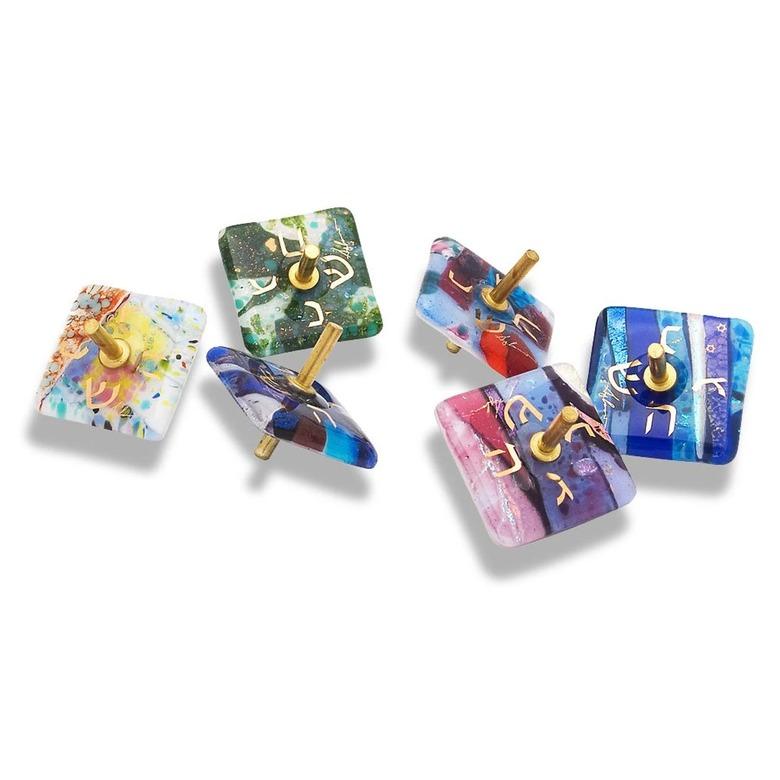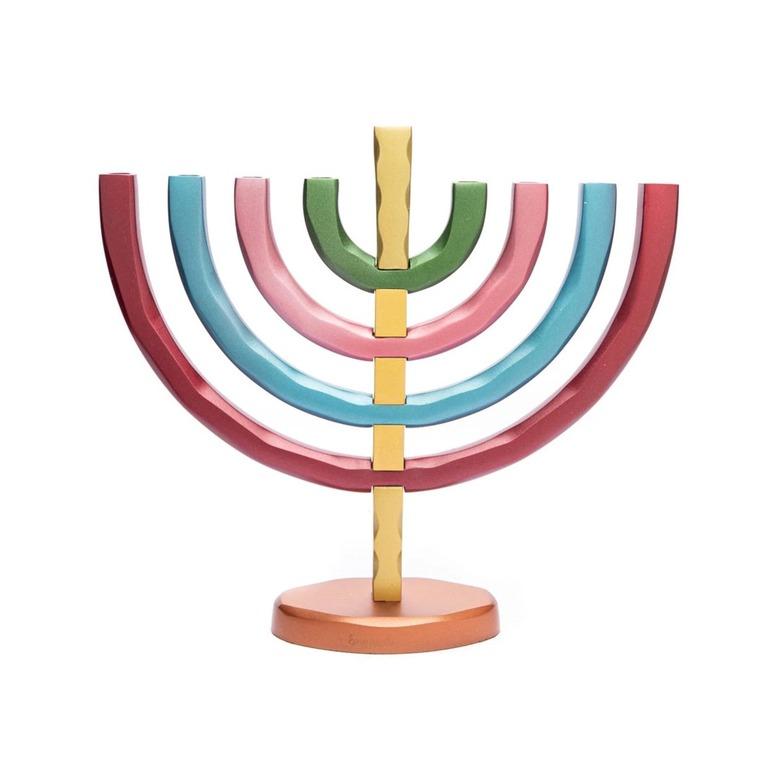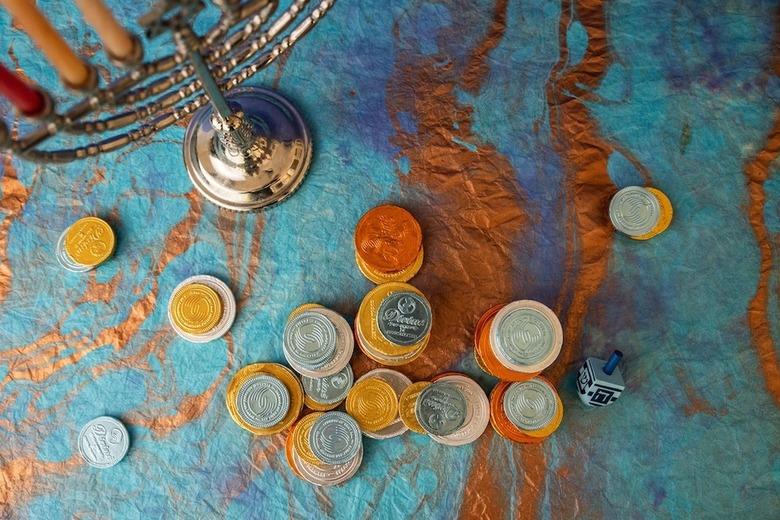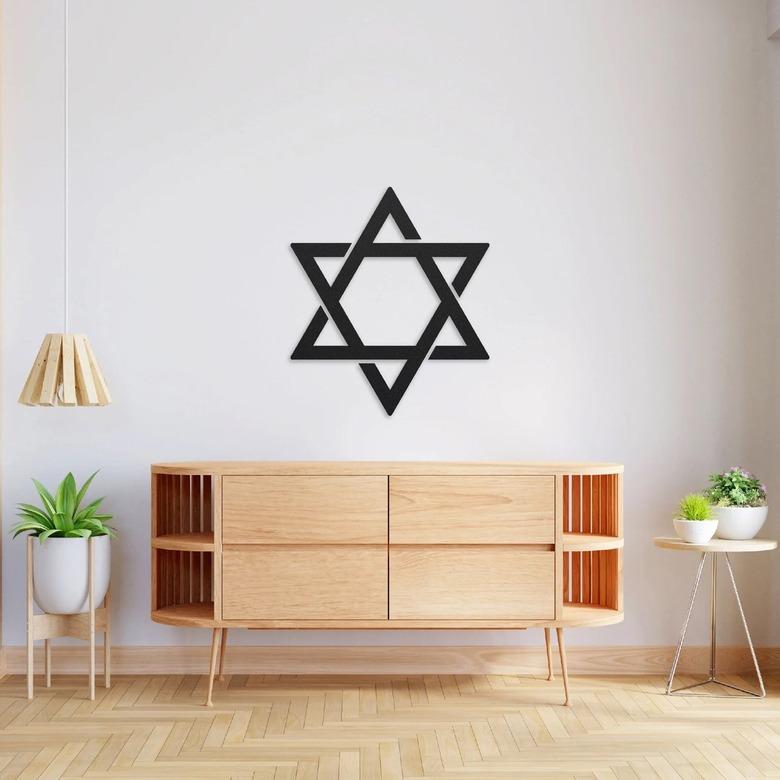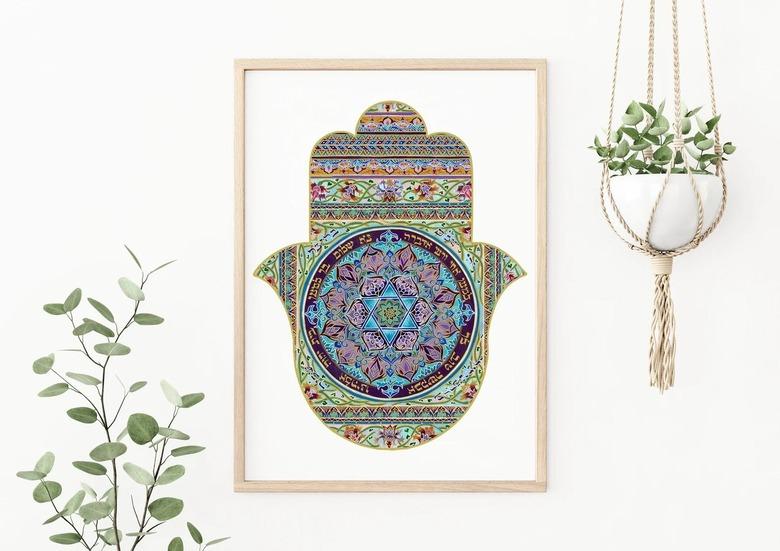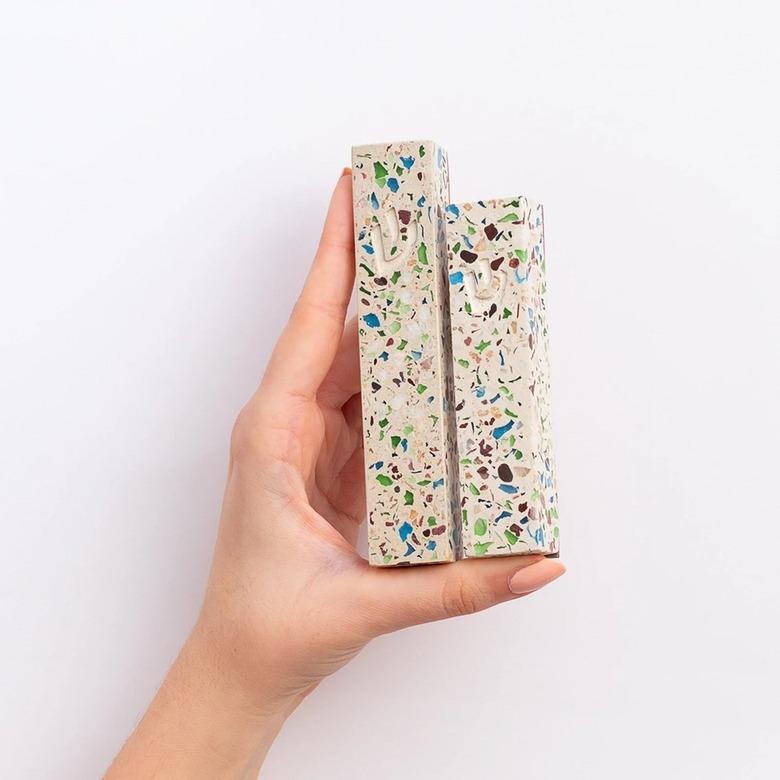7 Jewish Symbols And What They Mean In Your Home
There are quite a few symbols that can be associated with Jewish culture, and with Hanukkah in full swing, you may see even more than usual floating around. While some symbols like the menorah and dreidel may be a bit more recognized across the board, there are a handful of others that you may not have realized are significant in the Jewish religion.
Below are a few common emblems of Judaism, what they mean, and how you can incorporate them into your home — just in time for the holidays.
1. Pomegranates
Pomegranates hold a few meanings in Jewish tradition. They have been known to represent fertility, love, and knowledge. The fruit is one of the seven species of Israel, in addition to wheat, barley, grapes, figs, olives, and dates. Not to mention, they are a staple on the Rosh Hashanah table. Pomegranates continue to grow in abundance in Israel today, along with the rest of the Middle East.
You can shop these beautiful ceramic pomegranates here.
2. Dreidel
A dreidel is a four-sided spinning top with a Hebrew letter (nun, gimel, hay, and shin) engraved on the four sides, and it is spun as part of a game during Hanukkah. Legends say that during the time of the Maccabees, a group of Jewish rebels who freed Judea from the Seleucid Empire, Jewish children weren't allowed to study the Torah, but they learned in secret, using dreidels.
To play the game, each player has an equal number of gelt — more on what this is later — and everyone puts one piece of gelt into the middle of the table at the beginning of each round. The first player spins the dreidel and each letter symbolizes how much gelt the player can collect, from nothing to the entire pile. Whoever ends up with the most gelt is crowned the winner.
You can shop these colorful dreidels here.
3. Menorah
The menorah is the candelabra used for lighting the Hanukkah candles. Each menorah contains space for nine candles representing the eight nights of Hanukkah, plus the shamash, the middle candle raised high above the others that is used to light the others. Always light the shamash first before igniting the rest, adding a subsequent candle for each evening. The menorah is always lit from right to left.
You can shop this vibrant menorah here.
4. Gelt
The word "gelt" means "money" in Hebrew. This can be actual money, typically given as a gift, but more common today is chocolate gelt. The coin-shaped piece of chocolate is wrapped in gold foil and usually packaged in a yellow mesh bag. Chocolate gelt is passed out as a Hanukkah tradition and is used in the game of dreidel.
You can shop Hanukkah gelt here.
5. Star of David
The Star of David is probably one of the most recognized symbols in Judaism. You can easily draw one by making a triangle and then layering an upside-down triangle on top. The two triangles form a star with six points, which appears in synagogues and on the Israeli flag.
Known in Hebrew as Magen David, translated to "the shield of David," it was said to have been adopted by Jews as a symbol in the 19th century. The meaning of the star varies among groups, but interpretations suggest that the points represent the connection of God, the Torah, and Israel.
You can shop the Star of David here.
6. Hamsa
The hamsa has been used in various religions and has been interpreted in a few different ways. However, in the Jewish religion, the symbol is used to protect against evil forces. You'll see hamsas decorated throughout Jewish homes and on pendants.
You can shop this hamsa print here.
7. Mezuzah
A mezuzah is a piece of parchment, also called a klaf, that is etched with religious texts and placed in a decorative case to be hung in the doorways of Jewish homes. The mezuzah is a sign that you're in a space of Jewish commitment and serves as a reminder that the home is a holy place. It is also customary to touch the piece every time you pass through the doorway and then kiss your fingers. Some reform Jews believe this is good luck.
You can shop these modern mezuzahs here.
